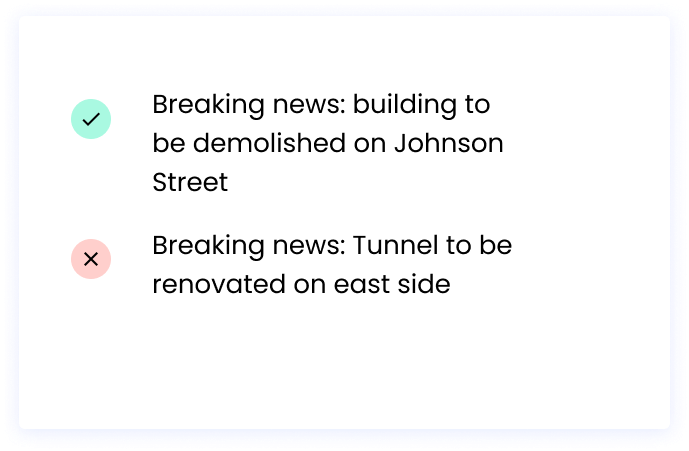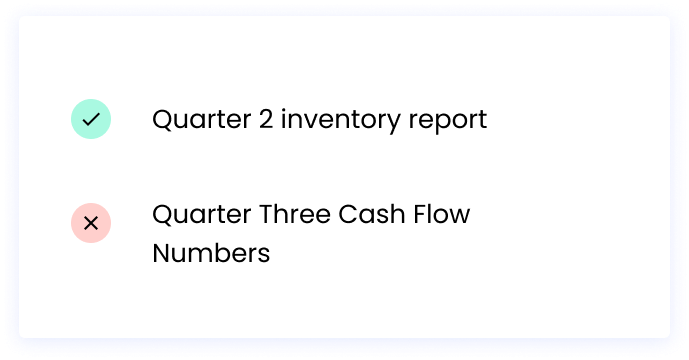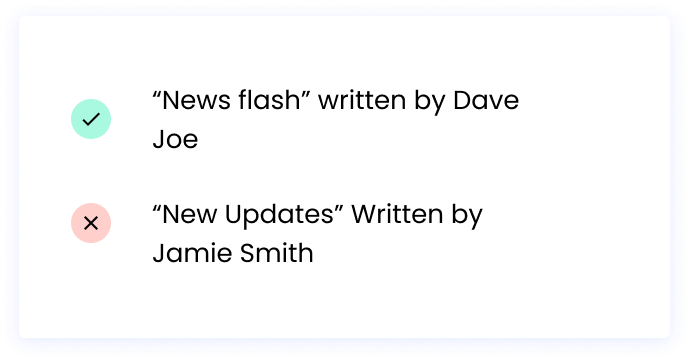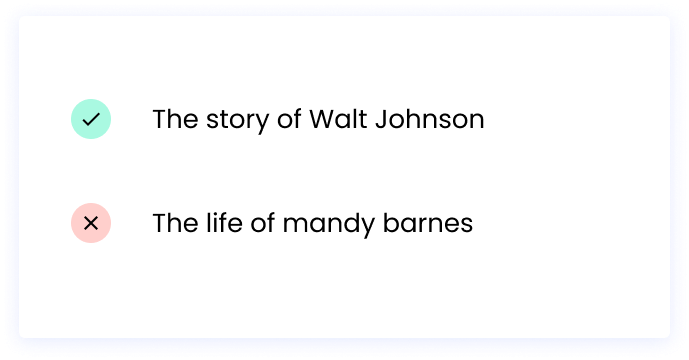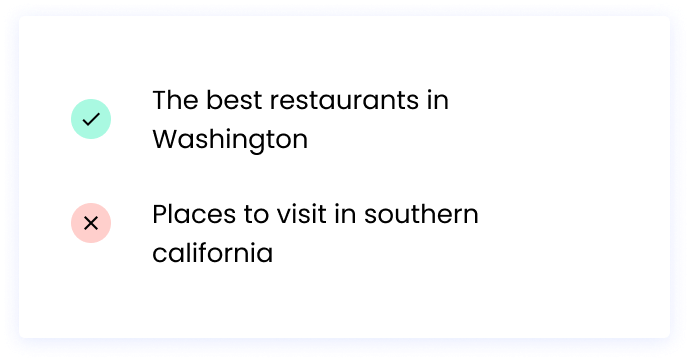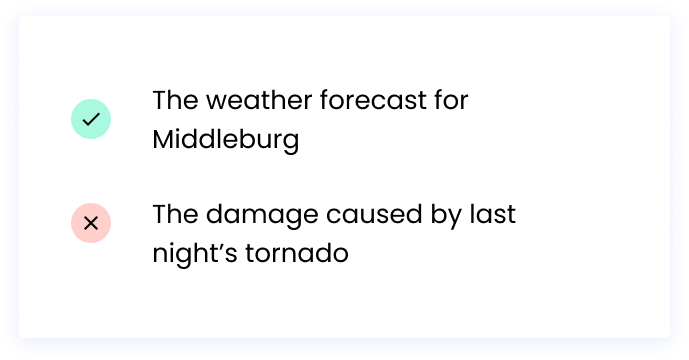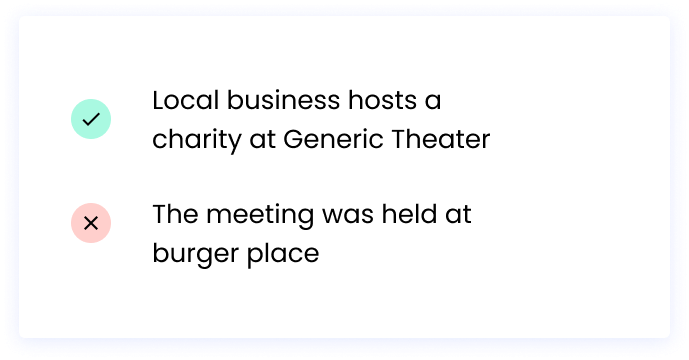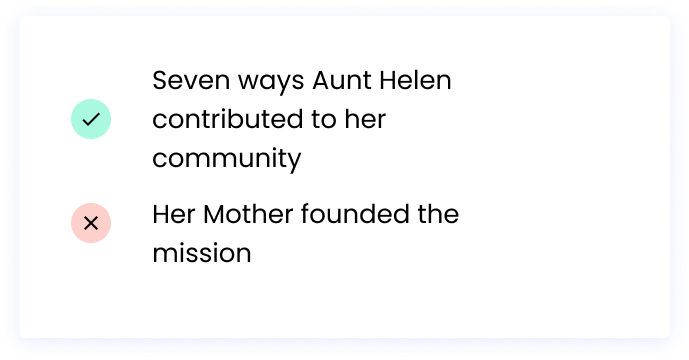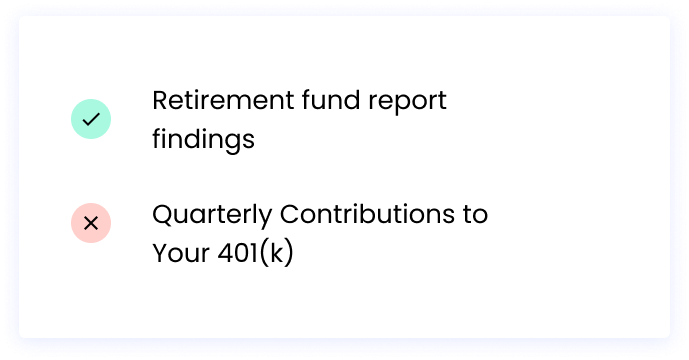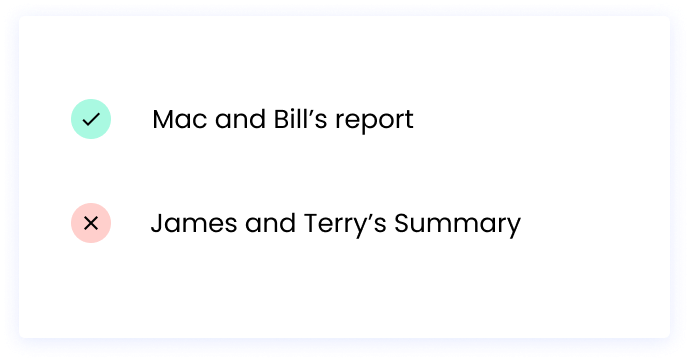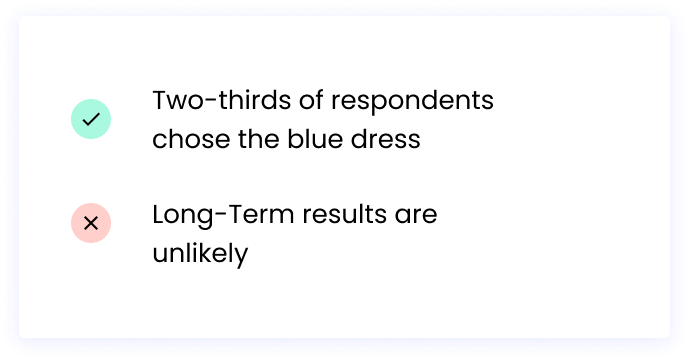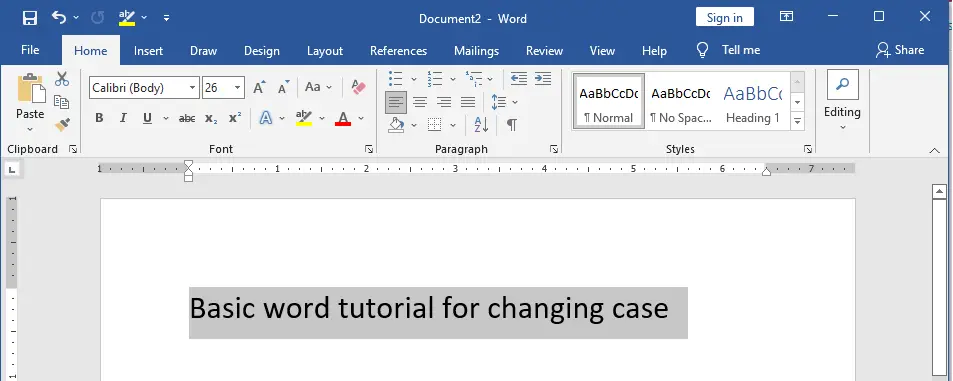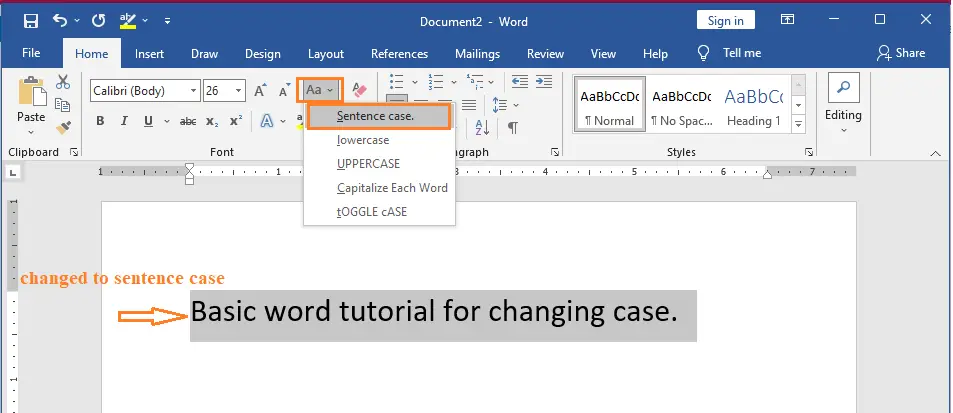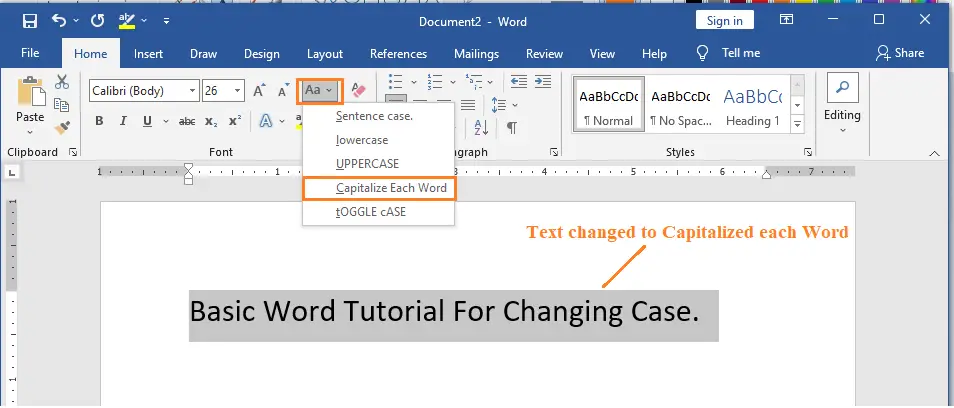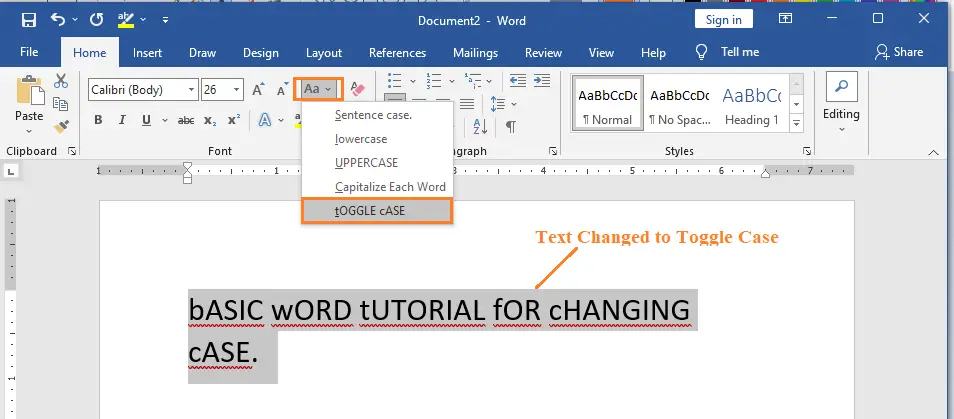With every title and subheading comes the need to figure out how it should be capitalized.
Depending on your style guidelines, the answer will likely be either title case or, more likely, sentence case. Sentence case is one of the most common capitalization styles out there. You’ll likely run into making the decision when writing a paper, essay, or blog post that includes a heading and subheading.
But what’s the difference between sentence case and title case, and does it matter which style you use?
In this post, we’ll answer all of these questions and give you examples of how to correctly use sentence case in your writing. We’ll also share our favorite free tools for automatically checking and converting your text into sentence case.
What is sentence case?
Sentence case, also known as down style or reference style, is a capitalization style. For this post, we’ll refer to it as its most common name: sentence case. This capitalization style is common in both the academic and professional worlds.
You’ve likely seen sentence case used in newspaper headlines and subheadlines this isn’t the only place you’ll find it. Sentence case can be part of a report, webpage, article, or another piece of work. Keep in mind that in addition to titles, sentence case rules can apply to subtitles, headings, and subheadings.
When you use sentence case, you capitalize just the first letter of the first word in the title. The rest of the words and letters in the title should not be capitalized, unless they’re proper nouns. True to its name, you’re essentially writing a sentence case title the same way you would a regular sentence.
However, some special circumstances will require capitalization in different parts of the sentence. For instance, like we mentioned, a proper noun would need to be uppercase no matter where it falls in the header.
What’s the difference between sentence case and title case?
Different writing styleguides and different situations call for either sentence or title case. But what’s the difference?
With sentence case, as mentioned above, you’ll need to capitalize the first letter of the first word in the title. The rest of the words aren’t capitalized, except for proper nouns.
However, title case is nearly the opposite. The first letter of each word in the title should be capitalized with title case. Like sentence case, this rule does have exceptions. Prepositions, articles, and other small words should be lowercase —his means words like “a,” “but,” “and,” or “of.” But in general, most of the words in title case will be capitalized.
Examples of sentence case style
Sentence case is easy to get the hang of with a little bit of practice. To get started, here are some examples you can reference.
Example 1:
Why: The first word after a colon should not be capitalized. Proper nouns still need to be capitalized in sentence case.
Example 2:
Why: Titles of reports do not need to be capitalized in sentence case.
Example 3:
Why: Titles of written works should not be capitalized in sentence case.
Example 4:
Why: Names should still be capitalized in sentence case.
Example 5:
Why: Countries, states, cities, etc., are all proper nouns and need to be written in uppercase.
Example 6:
Why: The first letter in sentence case must be capitalized.
Example 7:
Why: The names of places like restaurants and buildings are considered proper nouns. They should be capitalized.
Example 8:
Why: Small words, articles, and prepositions should not be capitalized in sentence case.
Example 9:
Why: Family relationship references (such as aunt, uncle, and cousin)should only be capitalized if they’re used as a proper noun. Otherwise, they should be lowercase with the rest of the common nouns in a sentence case title.
Example 10:
Why: This subhead in a report needs to follow sentence case guidelines.
Example 11:
Why: Names must be capitalized, but that doesn’t mean the rest of the sentence should follow title case guidelines.
Example 12:
Why: This one is a bit tricky. Typically, you want to lowercase all letters after the first one in sentence case unless it’s a proper noun. However, various styleguides have different rules for hyphenated words like the ones above. Check your specific guide for capitalization rules in this case.
Best free online sentence case checkers
These tools can all be used to proofread your work by checking for the correct use of sentence case.
If you miss the capitalization of a proper noun or forget to lowercase a word, these three online checkers will automatically fix it for you — and they’re free to use!
1. Convert Case
This tool is free to use and simple to navigate. Just drop your text in the box and watch your title get converted to sentence case at the click of a button. Once your work has been checked and converted to proper sentence case, if applicable, you can download or copy the new text to your clipboard.
2. Case Converter
Case Converter is an easy-to-use, web-based converter tool. To check your work, pop your text into the box and press one of four options: “UPPER CASE,” “lower case,” “Proper Case,” and “Sentence case.” You’ll want to select “Sentence case” here, but note that “Proper Case” shouldn’t be mistaken for title case. With proper case, all of the first letters of a word are capitalized, even articles, short words, and prepositions.
3. HTML Cleaner
HTML Cleaner lets you check and convert text to sentence case as well as other capitalization styles like “uppercase,” “snake_case,” and even “RaNdOM.” This site is useful for more than just sentence case checking. It’s great for anyone working on a website because it lets you copy text without the messy code that can disrupt your formatting. The tool lets you work in CSS, JS, and of course, HTML. But you don’t need to mess with code to use it. Just use it to check your sentence case titles for free!
At the end of the day, you’ll want to refer to your writing styleguide to see where you need to use sentence case and title case. Follow the guidelines, practice writing in sentence case, and don’t be afraid to use a case checker to verify your work.
Looking to use sentence case consistently in headlines and headings? Try Writer! Start a free trial today and customize your styleguide.
More resources
Updated on October 01, 2019
Sentence case is the conventional way of using capital letters in a sentence or capitalizing only the first word and any proper nouns.
In most newspapers in the U.S. and in virtually all publications in the U.K., sentence case, also known as down style and reference style, is the standard form for headlines.
Examples and Observations
- «The 100-year-old scientist who pushed the FDA to ban artificial trans fat.»
- «Barack Obama flies to thank troops who killed Bin Laden.»
- «FBI investigating Cardinals’ alleged hacking of Astros’ computer system.»
- AP Style: Headlines
«Only the first word and proper nouns are capitalized…» - APA Style: Sentence Style in Reference Lists
«In titles of books and articles in reference lists, capitalize only the first word, the first word after a colon or em dash, and proper nouns. Do not capitalize the second word of a hyphenated compound.» - «Librarians and bibliographers work with minimal capitals [i.e., sentence case], . . . yet [other options] are well established in literary tradition. For many people there’s virtue in using [sentence case] in lists and bibliographies, but using one of the other options for titles quoted in the course of a written discussion.»
- «In major companies, the problem of consistency may be largely unreconcilable. The public relations department has to use a ‘down style’ because it is writing for newspapers, but department heads insist on capitalizing the names of titles and departments…»
Sources
- The Washington Post, June 16, 2015
- The Guardian [U.K.], May 7, 2011
- Democrat and Chronicle [Rochester, N.Y.], June 16, 2015
- The Associated Press Stylebook: 2013, edited by Darrell Christian, Sally Jacobsen, and David Minthorn. The Associated Press, 2013
- (Publication Manual of the American Psychological Association, 6th ed. American Psychological Association, 2010
- Pam Peters, The Cambridge Guide to English Usage. Cambridge University Press, 2004
- Donald Bush and Charles P. Campbell, How to Edit Technical Documents. Oryx Press, 1995
In this course, we will talk about how to change the case of text in Microsoft Word. Meanwhile, this is the continuation of the previous tutorial on how to change font style and size in Microsoft Word which are part in formatting text in your documents.
Furthermore, you can also change the case of a character you are typing by holding down the SHIFT key as you type. You can also press the CAPS LOCK key to capitalize every letter you type. Press the CAPS LOCK key again to turn off capitalization.
Table of contents
- Change Case in Microsoft Word
- What is change case in MS Word?
- Change Case Option in MS Word
- Where is the change case command in word?
- What is Title case in MS Word?
- What is sentence case in MS Word?
- How To Change Case in Microsoft Word
- Change Case in Word Shortcut
- Summary
What is change case in MS Word?
The Change Case function allows you to change the text case without having to retype it. It is the option in Microsoft word which allows us to change the case of words in the sheet. In addition, it is a command, under Font group, that converts lowercase letters to uppercase and uppercase letters to lowercase.
Change Case Option in MS Word
The following Case Options are available:
- Sentence case: Capitalizes the first letter of the first word in a sentence.
- lowercase: Makes all the letters smaller.
- UPPERCASE: Makes every letter UPPERCASE.
- Capitalize Each Word: Every word’s first letter is capitalize. This is good for headings or titles.
- tOGGLE cASE: This makes the first letter of each word smaller and all the other letters bigger.
Where is the change case command in word?
The change case command in word, cab be found in the Font group on the Home tab. Click the arrow that points down next to the “Change Case” button. It shows the menu for text case. Finally, right-click the case you want to use.
What is Title case in MS Word?
Title case means that every first letter of the word is capitalized, except for small words like articles and short prepositions. Further, only the most important words are capitalized, while the rest are written in lowercase.
In addition, the title case is often used for headlines as well, like in newspapers, essays, and blogs. It is also called “headline style” because it is often used for headlines. MS Word Tutorial for Beginners, for example.
What is sentence case in MS Word?
Sentence case is a capitalization style where only words that are capitalized are the first word of a sentence and proper nouns. Then, the rest of the words are written in lowercase.
How To Change Case in Microsoft Word
Here are the steps you need to take to change the case in Microsoft Word.
- Step 1: Choose the text you want to change.
- Step 2: If you choose Sentence Case, the text will be changed to Sentence Case.
- Step 3: Choose the lowercase option to change the text to lowercase.
- Step 4:Choose UPPERCASE if you want the text to be changed to all capital letters.
- Step 5. If you choose the Capitalize Each Word option, each word in the text will be capitalized.
- Step 6: Choose tOGGLE cASE if you want the text to be changed to Toggle Case.
Change Case in Word Shortcut
Here are the keyboard shortcut keys that is the fastest and most effective way to use the Change Case features:
- Choose the text that needs to be changed.
- By pressing SHIFT + F3, you can quickly switch between other cases.
Summary
In summary, we’ve talked about how to change case in Microsoft Word as well as what those terms mean. In addition, we know the different cases option available in Microsoft Word. We also gain insight into changing cases options step by step.
We hope this tutorial helps you as you plan to create a document in MS Word.
PREVIOUS
NEXT
Proper case is any text that is written with each of the first letters of every word being capitalized. For example, “This Is An Example Of Proper Case.” is an example of sentence in proper case. Tip. Proper case should not be confused with Title case, which is most of the words being capitalized.
Contents
- 1 What is sentence case format?
- 2 How do you make sentence case?
- 3 What is casing in writing?
- 4 What is normal sentence case?
- 5 Are sentence cases APA?
- 6 What is Title case example?
- 7 How do I find the sentence case in Excel?
- 8 How do you change case in Excel?
- 9 What is word case?
- 10 Should buttons be title case or sentence case?
- 11 What is tOGGLE case and sentence case?
- 12 What is a proper noun example?
- 13 How do you write your name in sentence case?
- 14 What is initial case?
- 15 What is APA Format example?
- 16 Do you capitalize proper nouns in APA citations?
- 17 Should hyphenated words be capitalized?
- 18 How do you write a title case?
- 19 What is the rule for capitalization?
- 20 Is capitalized in title case?
What is sentence case format?
Sentence case is a capitalization style in which only the first word of a sentence and proper nouns are capitalized, with the rest of the words in lowercase. This mixed-case style is commonly used in prose but can also appear in headlines and titles.
How do you make sentence case?
Three main points for sentence case are:
- Capitalize the first letter of the first word of the title/heading and of any subtitle/subheading;
- Capitalize the first letter of any proper nouns and certain other types of words; and.
- Use lowercase for everything else.
What is casing in writing?
Letter case is the distinction between the letters that are in larger uppercase or capitals (or more formally majuscule) and smaller lowercase (or more formally minuscule) in the written representation of certain languages.
What is normal sentence case?
Sentence case involves capitalizing the first word, first word of a subtitle, and all proper nouns. In APA Style, the titles of journal articles and books should be presented in sentence case within references.
Are sentence cases APA?
APA’s title case refers to a capitalization style in which most words are capitalized, and sentence case refers to a capitalization style in which most words are lowercased.
What is Title case example?
What Is Title Case?In title case, all major words are capitalized, while minor words are lowercased. A simple example would be Lord of the Flies. Title case is often used for headlines as well, for example, in newspapers, essays, and blogs, and is therefore also known as headline style.
How do I find the sentence case in Excel?
To use this function type =PROPER( and provide string as input). read more converts the text from the improper case (mixed form) to the proper case. In the proper case, the first letter of each word is capitalized and the remaining letters are in lowercase.
How do you change case in Excel?
Change the case of text in Excel
- To change column A to Title Case, select cell B2. Type =PROPER(A2), and press Enter. Tip: Use the formula =UPPER(A1) for all UPPERCASE; =LOWER(A1) for all lowercase.
- Now fill down the formula through cell B10.
The Change Case function in Word allows you to change the text case instead of having to re-type it.lowercase. UPPERCASE (equates to SHOUTING. Better to use bold or apply a heading) Capitalize The First Letter of Each Word.
Should buttons be title case or sentence case?
In terms of UX, here are some good rules to follow for best results: Title case is best for buttons with no punctuation if you want symmetry, though some disagree and prefer sentence case for personal reasons.
What is tOGGLE case and sentence case?
Sentence case will capitalize the first word; lowercase will change all letters in the selection to lowercase; UPPERCASE changes all letters to uppercase;tOGGLE cASE reverses the case of each letter within the selection.
What is a proper noun example?
: a noun that names a particular person, place, or thing “Tom,” “Chicago,” and “Friday” are proper nouns.
How do you write your name in sentence case?
When you use sentence case, you capitalize just the first letter of the first word in the title. The rest of the words and letters in the title should not be capitalized, unless they’re proper nouns. True to its name, you’re essentially writing a sentence case title the same way you would a regular sentence.
What is initial case?
Initial Case (Capitalize Every Word)
In initial case, you capitalize the first letter of every word in titles and subtitles.
What is APA Format example?
APA in-text citation style uses the author’s last name and the year of publication, for example: (Field, 2005). For direct quotations, include the page number as well, for example: (Field, 2005, p. 14).
Do you capitalize proper nouns in APA citations?
Proper nouns are always capitalized. Also, if the title contains a colon or dash, the word immediately following it is capitalized. You should always italicize book and journal titles. Article titles are neither italicized nor in quotes.
Should hyphenated words be capitalized?
For hyphenated compounds, it recommends: Always capitalize the first element. Capitalize any subsequent elements unless they are articles, prepositions, coordinating conjunctions (and, but, for, or, nor), or such modifiers as flat or sharp following musical key symbols.
How do you write a title case?
The rules are fairly standard for title case:
- Capitalize the first and the last word.
- Capitalize nouns, pronouns, adjectives, verbs (including phrasal verbs such as “play with”), adverbs, and subordinate conjunctions.
- Lowercase articles (a, an, the), coordinating conjunctions, and prepositions (regardless of length).
What is the rule for capitalization?
In general, you should capitalize the first word, all nouns, all verbs (even short ones, like is), all adjectives, and all proper nouns. That means you should lowercase articles, conjunctions, and prepositions—however, some style guides say to capitalize conjunctions and prepositions that are longer than five letters.
Is capitalized in title case?
When using title case, all words are capitalized except for minor words (typically articles, short prepositions, and some conjunctions) unless they are the first or last word of the title. There are different rules for which words are major, hence capitalized.
Table of Contents
- Do you capitalize February?
- What are sentence cases used in MS Word?
- How do you write the title of a sentence in case?
- What is meant by Title case?
- What is the meaning of the title?
- Is Mr A title?
- Is Mr and Mrs A title?
- What’s the difference between a name and a title?
- What is another name for title?
- Is a title name?
- Is a person’s name a title?
- What is a formal title?
- How do you write a full name with a nickname?
- Can I legally use my nickname?
- Can I put a fake name on my resume?
- Can you write a nickname on a letter?
Title case means that the first letter of each word is capitalized, except for certain small words, such as articles and short prepositions. Sentence case involves capitalizing only the first word and any proper nouns.
Do you capitalize February?
The names of things are generally proper nouns. A good clue is that in English we almost always capitalize proper nouns, like the days of the week and the months of the year. Yes ‘February’ is a proper noun because it is the name of the month. February is a specific month, and no other months are named February.
What are sentence cases used in MS Word?
The case menu offers four options;
- Sentence case: It capitalizes the first letter of each sentence.
- Lowercase: It changes the text from uppercase to lowercase.
- Uppercase: It capitalizes all the all letters of your text.
- Capitalize Each Word: It capitalizes the first letter of each word.
How do you write the title of a sentence in case?
What is sentence case?
- Capitalize the first letter of the first word of the title/heading and of any subtitle/subheading;
- Capitalize the first letter of any proper nouns and certain other types of words; and.
- Use lowercase for everything else.
What is meant by Title case?
Title case means that the first letter of each word is capitalized, except for certain small words, such as articles and short prepositions. Use title case for the following screen elements: Menu options and pushbuttons.
What is the meaning of the title?
1 : the name given to something (as a book, song, or job) to identify or describe it. 2 : a word or group of words attached to a person’s name to show an honor, rank, or office With her promotion came a new title. 3 : a legal right to the ownership of property.
Is Mr A title?
(US) or Mr (UK), is a commonly used English honorific for men under the rank of knighthood. The title ‘Mr’ derived from earlier forms of master, as the equivalent female titles Mrs, Miss, and Ms all derived from earlier forms of mistress. Master is sometimes still used as an honorific for boys and young men.
Is Mr and Mrs A title?
Mr. is a title used before a surname or full name of a male, whether he is married or not. Mr. is an abbreviation for Mister, it is pronounced like the word Mister. Mrs. is a title used before a surname or full name of a married female. Mrs. is an abbreviation for the word Missus, it is pronounced like the word Missus.
Generally a name refers to a specific thing (distinctive name), and a title refers to a thing that fulfills a requirement or a role (descriptive name).
What is another name for title?
Title Synonyms – WordHippo Thesaurus….What is another word for title?
| heading | caption |
|---|---|
| legend | inscription |
| slogan | motto |
| wording | subheading |
| label | name |
Is a title name?
A title is one or more words used before or after a person’s name, in certain contexts. It may signify either veneration, an official position, or a professional or academic qualification. A name is a term used for identification.
Is a person’s name a title?
A title is one or more words used before or after a person’s name, in certain contexts. It may signify either generation, an official position, or a professional or academic qualification.
What is a formal title?
Formal titles are those the denote a scope of authority, professional rank or academic rank: professor, judge, mayor, doctor, king, emperor. Remember, they’re capitalized when used with a proper name, but not when used alone. Most formal titles are not abbreviated when used with a proper name.
How do you write a full name with a nickname?
What is the proper style for inserting a person’s nickname into his or her written full name? Most stylebooks specify placing the nickname after the forename and enclosing it in quotation marks. Some stylebooks say parentheses may be used instead.
Can I legally use my nickname?
Yes, as long as the nickname is sufficient to identify you as party to the contract, but generally a full legal name is better able to do this. Example: Brian James Smith is more identifiable than BJ Smith.
Can I put a fake name on my resume?
A resume is not a legal document, so technically you can. However, if you consider the consequences of using a fake name then it should be obvious that it’s not a good idea.
Can you write a nickname on a letter?
Use the full, unabbreviated form of your name anytime you’re writing a formal or professional letter. When addressing a casual letter to a friend or loved one, it’s alright to use a shortened form of your given name or a nickname, such as “Chuck” or “Shorty.”

